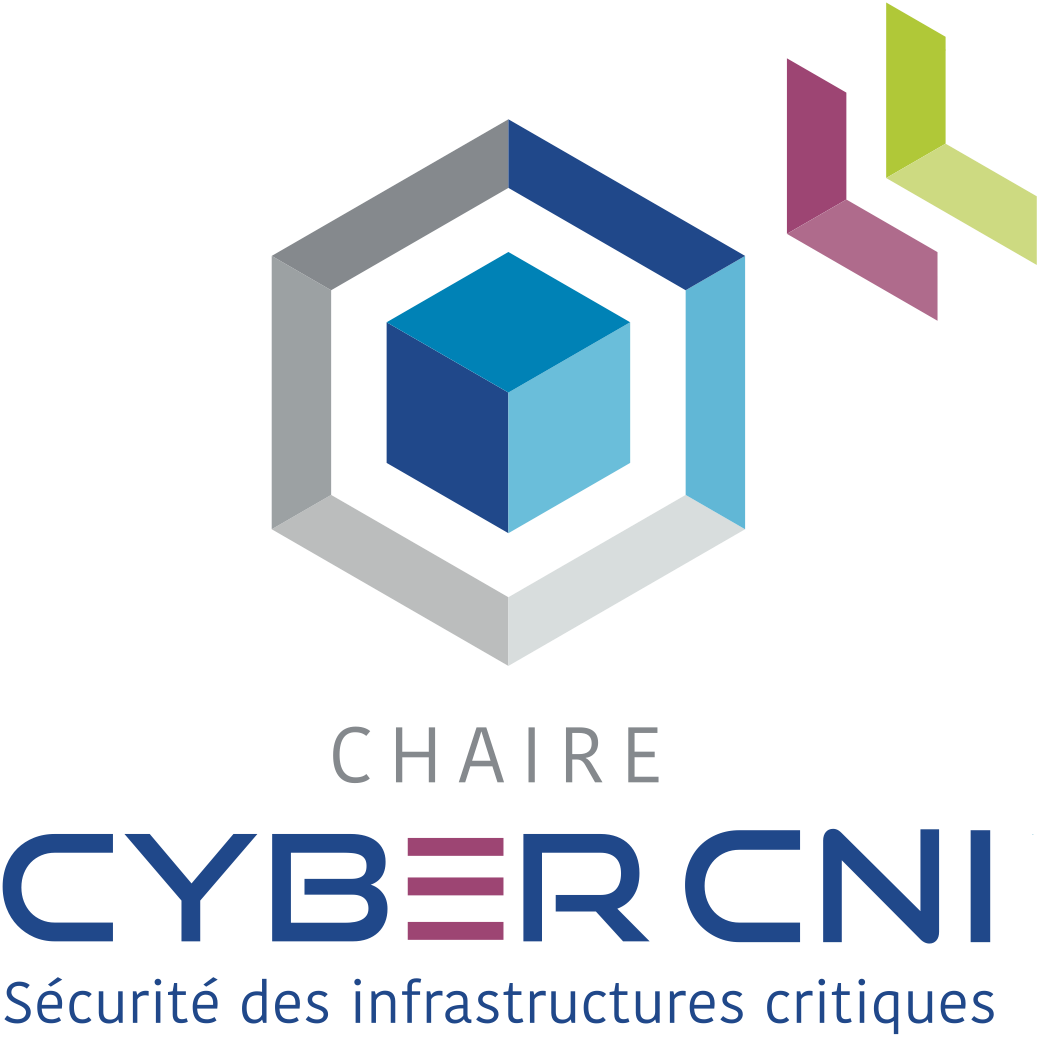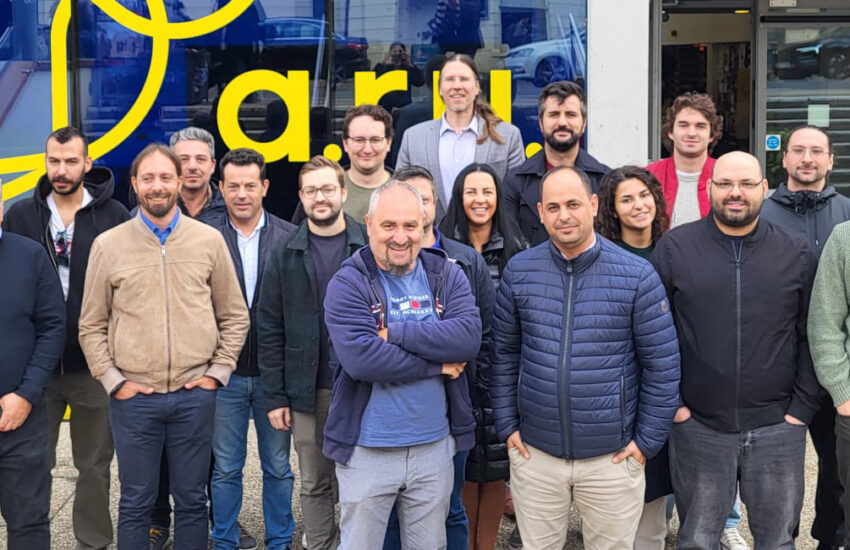Strengthening research collaboration with science hackathons
Simon Foley (IMT Atlantique, Rennes), Nov. 2018.
Earlier this year, the IMT Chaire in Cybersecurity of Critical Infrastructures ran a science hackathon to develop a transverse use-case spanning a number of research projects involving ten researchers from IMT Atlantique, Telecom ParisTech and Telecom SudParis. A science hackathon is about hacking research: researchers explained their ongoing research, worked on shared research questions and solutions, learnt and taught each other about relevant technology and worked on a SCADA controlled fischertechnik cyber-physical system that reproduces, at a small scale, how modern industrial control systems are connected to an organization’s IT network.
IMT Chaire in Cybersecurity of Critical Infrastructures
The Cyber CNI Chair is an Institut Mines Telecom (IMT) industry chair on the cyber-security of Critical National Infrastructure with one focus on the security of cyber-physical systems. A collaboration between three geographically dispersed IMT schools and eight industry partners, industry use-cases form an important part of the research activity of each doctoral/post-doctoral researcher. With over fifty academic and industry researchers and investigators working together on ten separate, although related, targeted projects, there is a risk that these research efforts become siloed, if not by project, then by school.
Time-bounded collaborative events
Time-bounded collaborative events, such as hackathons, jams and sprints, are increasingly used as a means of bringing groups of individuals together, in order to explore challenges and develop solutions. Popular in Information Technology and software development, these events are especially suited to agile development, with intensive coordination and collaboration between different groups of participating individuals, working to rapidly evolve requirements and solutions. Often, the participants do not routinely work together outside of the event and, therefore, these events can also have an important social component in terms of establishing new working-relationships and community building. Hackathons are not limited to software development, they are also used to stimulate and support cross-disciplinary collaboration and development in areas such as healthcare, biological sciences and business.
Hackathons have their origins in the open source movement of the 1990’s with the purpose of contributing to existing code-bases and developing software artefacts. Jams typically emphasize understanding and design, such as legal (design) jams to make legal documents easier and more user-friendly, and game-jams which story-board games from scratch (and often extending to prototyping). Hackathons, and their time-bounded collaborative event variants, are not limited to open communities of participants. Organizations are increasingly using these types of events to drive innovation, such as design sprints that draw on corporate strategy, cross-organization collaboration, rapid prototyping, and testing.
Studies have found that contemporary hackathons are becoming relatively competitive events with time-pressures and prize incentives. This can encourage participants to focus on persuasive presentations and organizing themselves to optimize resources, at the expense of technical depth and personal learning. This contrasts with the more recent phenomena of the science hackathon where emphasis is placed on learning and collegiality among participants, rather than on the competitive aspects. Science hackathons are time-bounded collaborative events where a group of researchers come together to identify research challenges and develop new lines of research, that is, to hack research.

We organized our science hackathon in three stages. Our goal was to develop a transverse use case of a cyber-physical system in which different research questions from different research projects could be considered. A two-hour brainstorming session by the researchers identified and developed a strawman proposal for a research target (a SCADA controlled fischertechnik cyber physical system). This was followed by a one-day requirements jam that considered this proposal, and developed a shared understanding of the platform requirements. These requirements were, in turn, developed and implemented at a 2-day prototyping hackathon. We wrote an article about our experience of running this science hackathon: “Science hackathons for cyber-physical system security research: Putting CPS testbed platforms to good use’’ and presented it as the 2018 ACM Workshop on Cyber-Physical Systems Security and Privacy (CPS-SPC@CCS).
Experiencing a science hackathon
During the course of our science hackathon, an applied psychologist carried out a study of the participants’ experience of the event. Driven primarily by the hackers (the doctoral students), the autonomous and non-competitive nature of the event was found to be beneficial, an observation consistent with other studies of time-bounded collaborative events. With a further objective of fostering collaboration and an esprit du corps, the science hackathon was successful, as evident in the interest and enjoyment expressed by participants in learning about the work of other team members. The transverse use case provided a broader context in which to understand and relate individual research challenges of the doctoral students thereby helping to ameliorate the risk of research silos.
The cyber-physical platform, and what was developed in the science hackathon, was conceptualised as a means of communicating with others about research, such as industrial partners, and those with less technical domain expertise. As such, its role in improving communication is envisaged as being bidirectional, with the suggestion from participants that it could be useful as a way, not alone to explain their research, but also as a way for industrial partners to provide feedback on that research.
With conventional capture-the flag hackathons, expectations are generally well understood: attack or defend. However, expectations are less certain in a science hackathon, as was evident in our study. Introducing more organization to the event may help provide clarity, although it can work against innovation. This motivated our use of the requirements jam as a means to help set expectations and encourage autonomous collaboration. While being broad in its objectives to the extent that individuals were initially somewhat unsure about how to respond, the jam did provide clarity to individuals on the potential for them to contribute, as well as allowing them to see how responses to the same questions differed. A level of uncertainty about what was expected, and what might emerge, from the process was evident. This reflected our decision to adopt a light approach to managing the event, as a way of facilitating both serendipity and the opportunity for team independence.
The science hackathon was a valuable learning experience for participants, providing an opportunity to develop a sense of their own research in relation to that of others; how collaboration could work as a process, as well as for future research.
The IMT Cyber CNI Chair is held by IMT Atlantique and supported by Airbus Defence and Space, Amossys, BNP Parisbas, EDF, Orange, La Poste, Nokia, Société Générale, the Regional Council of Brittany and European Regional Development Fund.
- Renforcement de la collaboration franco-allemande en cybersécurité : La réunion annuelle du German Chapter of the ACM 2025 - April 2, 2025
- Exciting Workshop Program Announced – Join Us in Hawaii! 🌺 - March 21, 2025
- 12th Heidelberg Laureate Forum 2025 - January 31, 2025









